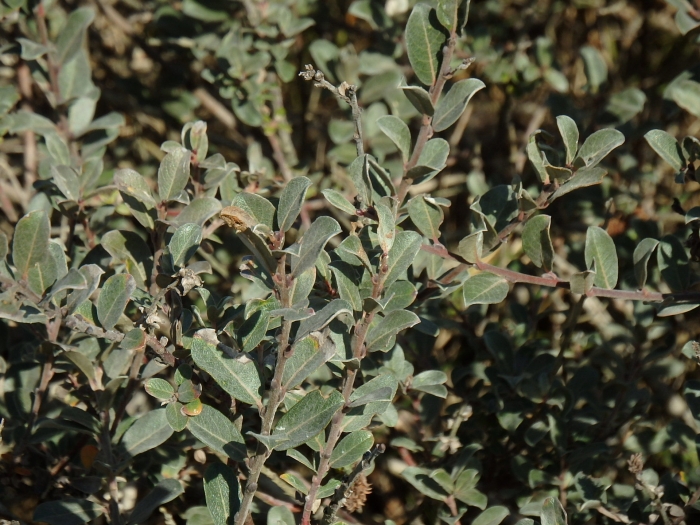Creeping Willow
(Salix repens)
Creeping Willow (Salix repens)
/
/

Duarte Frade
CC BY 4.0
Image By:
Duarte Frade
Recorded By:
Copyright:
CC BY 4.0
Copyright Notice:
Photo by: Duarte Frade | License Type: CC BY 4.0 | License URL: http://creativecommons.org/licenses/by/4.0/ | Rights Holder: Duarte Frade | Publisher: iNaturalist | Date Created: 2019-08-20T15:16:19-07:00 |





























































Estimated Native Range
Summary
Salix repens, commonly known as Creeping Willow, is a deciduous shrub native to a variety of habitats including coastal dunes, moorlands, and alongside streams and rivers in Northern and Central Europe. It is a small, mat-forming willow that typically grows up to 1.5 meters in height, with a tendency to spread horizontally. The species is highly variable in appearance, with some forms being low and creeping while others are more erect. Creeping Willow is characterized by its slender branches, small leaves that can be either smooth or hairy, and catkins that appear in early spring before the leaves. The flowers are usually not showy, but they are an important source of early pollen for bees.
Creeping Willow is valued for its ability to stabilize soil and is often used in conservation plantings, particularly in coastal areas where its tolerance for salt spray and wind is beneficial. It is also used in ornamental gardens for ground cover and in wet areas where few other plants can thrive. This willow prefers full sun to part shade and requires moist to wet soil conditions, often thriving in poorly drained areas. While it is not known for particular diseases, it can sometimes suffer from willow scab and canker. It is also important to note that willows can have aggressive roots, which should be considered when planting near structures or drainage systems.CC BY-SA 4.0
Creeping Willow is valued for its ability to stabilize soil and is often used in conservation plantings, particularly in coastal areas where its tolerance for salt spray and wind is beneficial. It is also used in ornamental gardens for ground cover and in wet areas where few other plants can thrive. This willow prefers full sun to part shade and requires moist to wet soil conditions, often thriving in poorly drained areas. While it is not known for particular diseases, it can sometimes suffer from willow scab and canker. It is also important to note that willows can have aggressive roots, which should be considered when planting near structures or drainage systems.CC BY-SA 4.0
Plant Description
- Plant Type: Shrub
- Height: 0.3-0.5 feet
- Width: 0.5-1.5 feet
- Growth Rate: Moderate
- Flower Color: N/A
- Flowering Season: Spring
- Leaf Retention: Deciduous
Growth Requirements
- Sun: Full Sun, Part Shade
- Water: Medium, High
- Drainage: Medium, Fast
Common Uses
Bank Stabilization, Bee Garden, Bird Garden, Butterfly Garden, Deer Resistant, Erosion Control, Groundcover, Low Maintenance, Rock Garden, Salt Tolerant
Natural Habitat
Coastal dunes, moorlands, and riparian areas in Northern and Central Europe
Other Names
Common Names: Moorweide, Kriech-Weide, Saule Rampant, Kruipwilg, Hundvide, Krypvide
Scientific Names: , Salix repens, Salix angustifolia, Salix repens subsp. angustifolia, Salix repens var. angustifolia, Salix fusca, Salix versifolia, Salix subalpina, Salix patzeana, Salix argentea
GBIF Accepted Name: Salix repens L.